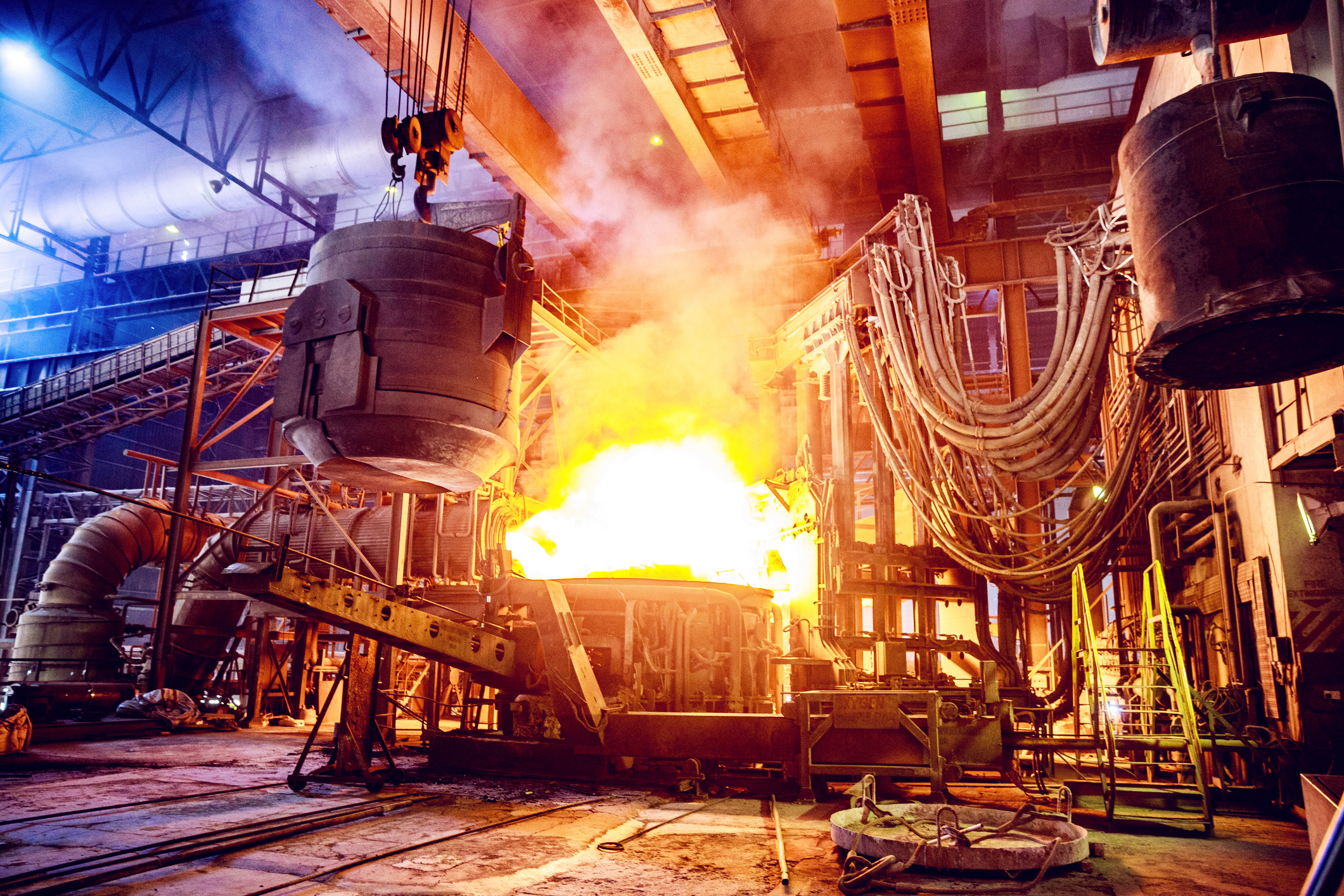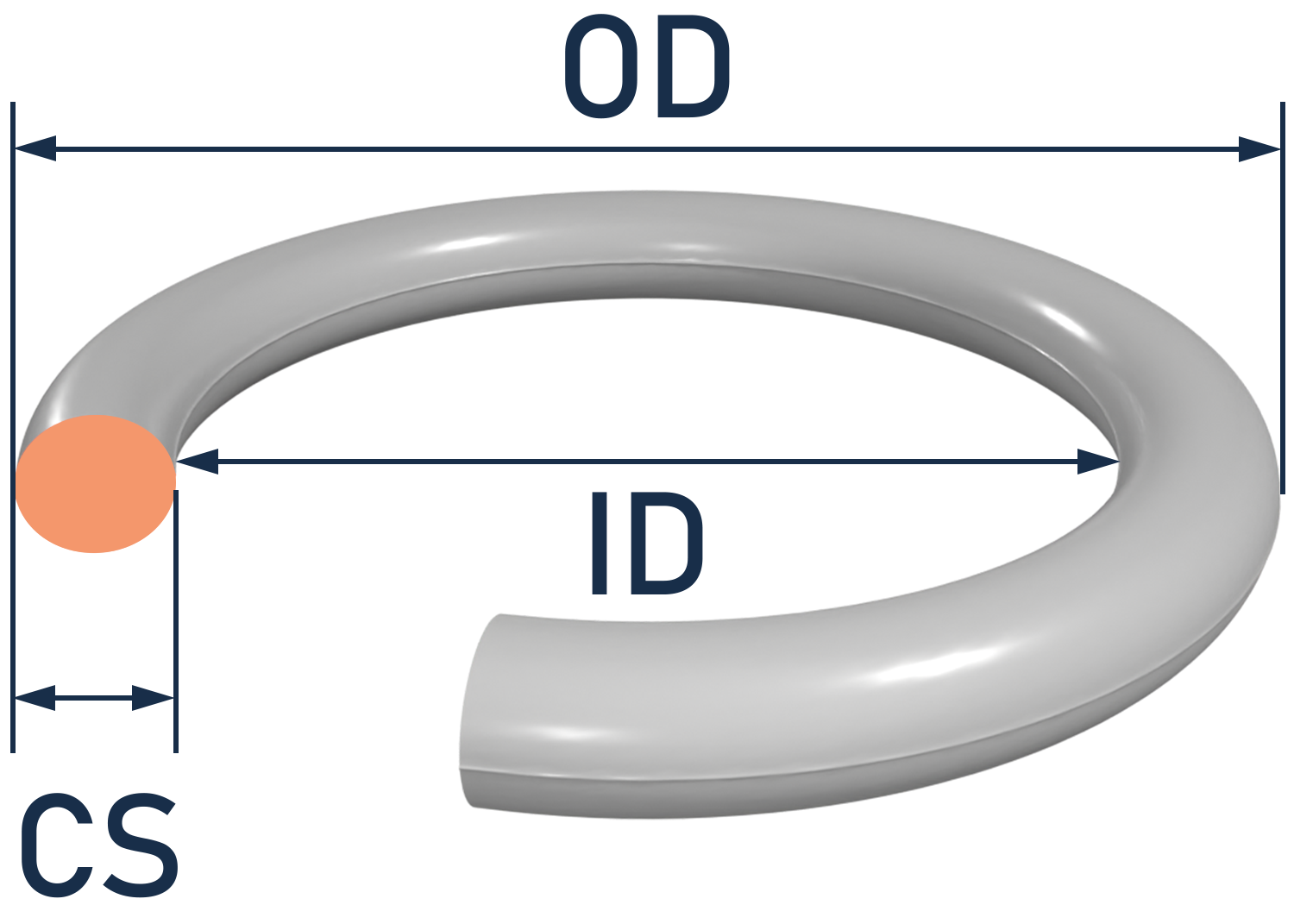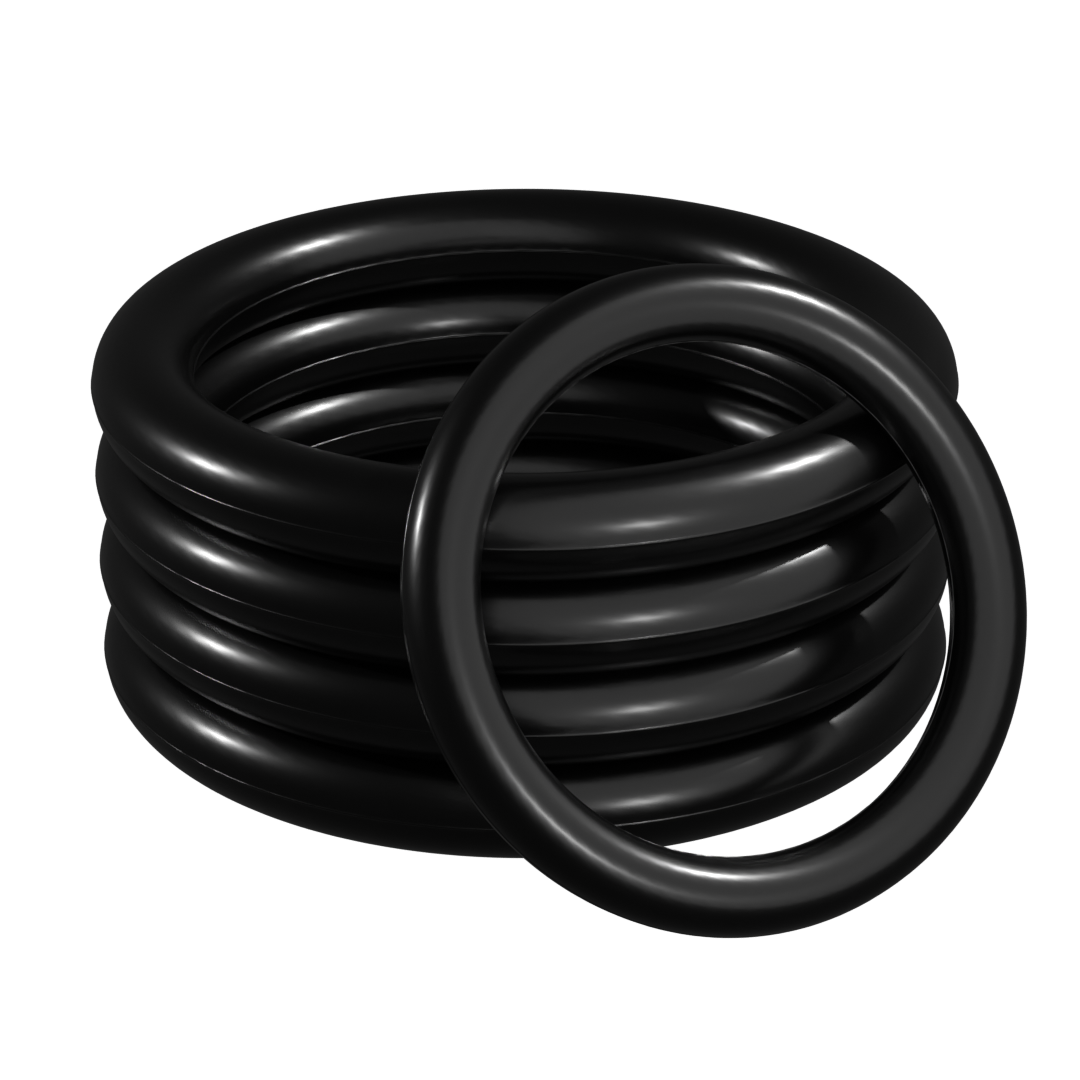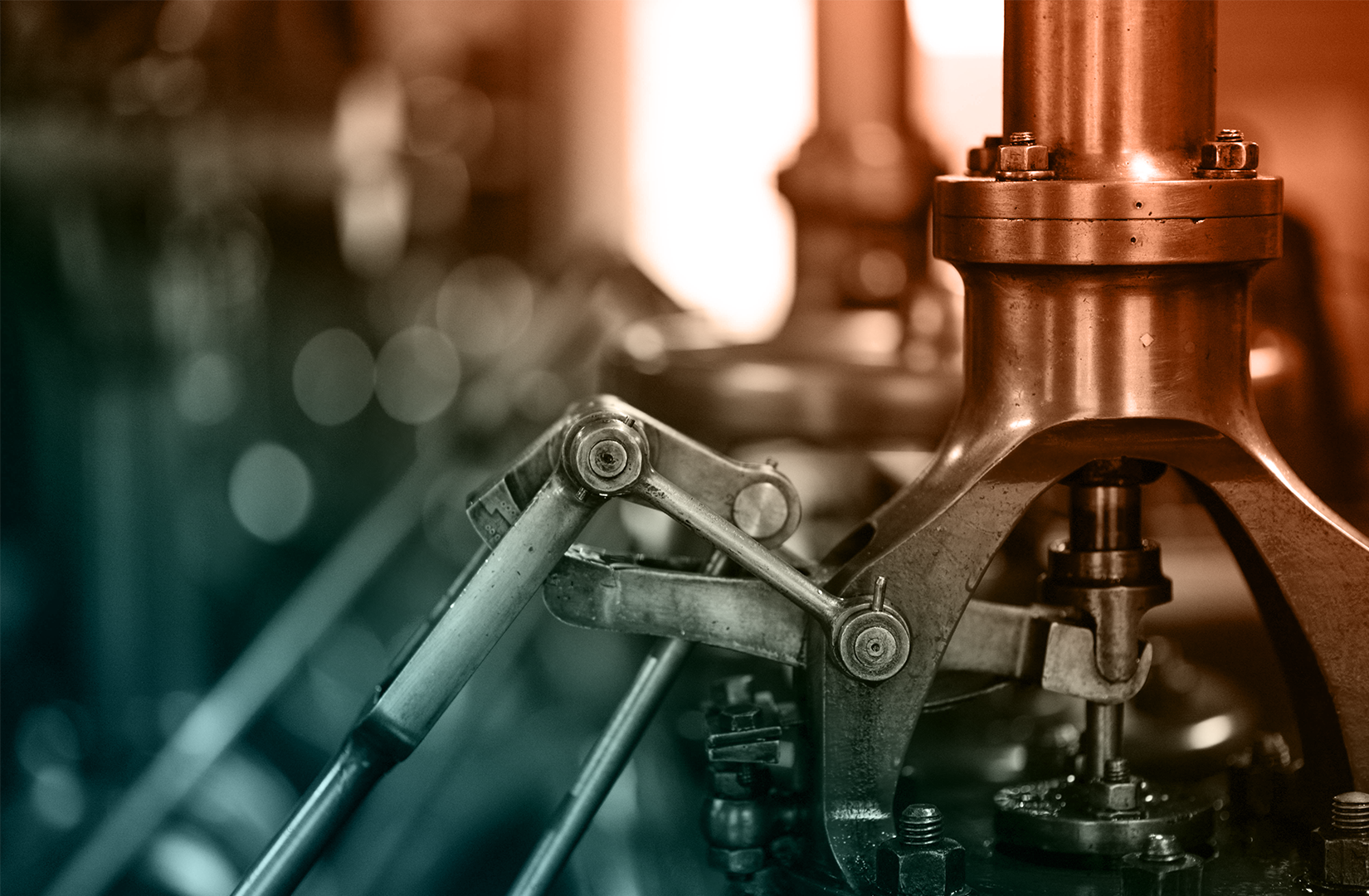
Polyurethane (PU, AU) Selection Guide
Polyurethane is an organic polymer formed by reacting a polyol alcohol with a cyanate in the presence of suitable catalysts and additives. The result of this reaction is a thermoplastic elastomer, and therefore demonstrates drastically different mechanical properties than elastomeric rubbers. For example, Polyurethane O-rings, gaskets, & custom molded parts generally have two or three times greater tensile strength and wear resistance than Nitrile and comparable polymers. Polyurethane O-rings, gaskets, & custom molded parts also provide excellent permeation resistance when compared to most rubbers. However, the plastic material becomes brittle at low temperatures and will begin to warp and flow at high temperatures, making polyurethane O-rings, gaskets, & custom molded parts not suitable for some applications. Polyurethane O-rings, gaskets, & custom molded parts are most commonly used in hydraulic systems and other applications where high pressure and wear resistance are critical, but extreme temperatures are not a factor.
Common names include: PU (Polyurethane), Urethane, AU, EU Trade Names: Parker Resilon®, Adiprene®, Millathane®, Vibrathane®, Disogrin

Features of Polyurethane
- Polyurethane O-rings, gaskets, & custom molded parts have excellent tear and abrasion resistance
- Polyurethane O-rings, gaskets, & custom molded parts have good resistance to hydraulic oil and gasoline
- Polyurethane O-rings, gaskets, & custom molded parts have resistance to pure aliphatic hydrocarbons (propane, butane, fuel)
- Polyurethane O-rings, gaskets, & custom molded parts are resistant to mineral and silicone oils and greases
- Polyurethane O-rings, gaskets, & custom molded parts are resistant to water, oxygen, ozone and aging
- Available in multiple compounds to meet performance and cost requirements
Limitations of Polyurethane
- Polyurethane O-rings, gaskets, & custom molded parts have poor resistance to acids, ketones, esters, ethers, alcohols, glycols
- Polyurethane O-rings, gaskets, & custom molded parts are not compatible with hot water, steam, alkalis and amines
- Polyurethane O-rings, gaskets, & custom molded parts have a typical Service Temperature Range of (varies with application): -65°F to 225°F (-54°C to 107° C)
Please consult a Canyon Components Engineer about your specific application and we will use our decades of experience to formulate a solution that fits your need.
Polyurethane (PU, AU) Materials Available
Polyurethane elastomers are highly versatile and can be tailored to meet specific mechanical properties, such as hardness, flexibility, and resilience, by adjusting the composition of the polymer and the curing process.
If you're interested in learning more about the technical details of Polyurethane and how different blends and manufacturing methods change the behavior of the final material, check out our detailed guide!
This table shows many of our standard materials and links out to our O-ring store. Get in touch with us if you need a custom gasket, custom molded part, or non-standard geometry!

Filter by
Temperature Search (°C)

Engineers Toolbox - Polyurethane
The section below is pulled from our blog post: The Engineer's Toolbox: Polyurethane Elastomers for High-Performance Seals and Belts.
A polyurethane elastomer is a type of polymer material that possesses both the characteristic elasticity of "rubber" materials and the durability & toughness of "plastic" materials. Polyurethane elastomers are formed through the reaction of polyols (such as polyester or polyether polyols) with diisocyanates. This reaction creates a network of urethane linkages, which gives the material its elastomeric properties.
Polyurethane elastomers are highly versatile and can be tailored to meet specific mechanical properties, such as hardness, flexibility, and resilience, by adjusting the composition of the polymer and the curing process.
Relevant variables for polyurethane Elastomers fall into three categories: Manufacturing method, Backbone type, & Isocyanates type.

Manufacturing Methods
Millable Gum (Thermoset Polyurethane)
Features and Benefits:
- Millable gum thermoset polyurethane can be processed using traditional rubber mixing, molding, and processing equipment.
- Millable gum thermoset polyurethane offers improved wear, cut/tear resistance, and physical toughness over standard organic rubber materials of the same durometer (and better resilience than XNBR).
- Millable gum thermoset polyurethane systems are available in polyether and polyester materials, can be FDA compliant.
- Millable gum thermoset polyurethane materials normally offer the lowest production costs for polyurethanes and can be run on tooling cut for standard material shrinkages.
- Millable gum thermoset polyurethane is typically low cost, available widely in O-rings and other geometries.
- Durometer ranges from 25A to 60D are possible.
- Colored materials are possible using neutral or off-white fillers (mineral fillers) and colorants.
Limitations:
- Millable polyurethane materials are typically cured with sulfur or peroxide instead of isocyanates which produces inferior physical properties compared to TPU’s (Thermoplastic polyurethane).
- Millable polyurethane materials must be compounded with fillers, process aids, and plasticizers to offer acceptable physical properties when compared to standard urethane systems.
- Millable polyurethane materials need support from UV absorbers and antioxidant materials for better heat and oil aging.
TPU (Thermoplastic Polyurethane)
TPU materials are higher cost materials than millable materials, but offer the utility of being able to be processed on thermoplastic molding equipment.
Features and Benefits:
- Shorter cycle times offers an economic advantage over other classes.
- A broad range of material options are available with multiple backbones (polyether, polyester, polycaprolactone, polycarbonate)
- A fairly large range of durometers (50A to 85D) and physical properties are available for varied to application demands.
- Uncolored material will typically range from translucent to dark amber. TPU can be colored easily to meet user needs.
- TPU materials normally offer higher modulus values than millable gums at equivalent durometers, and usually have poorer compression set values than millable or cast compounds due to their thermolabile chemistry.
- MDI is the most common isocyanate, but PPDI, TODO and some HDI and IPDI materials are available.
- Can easily be machined from stock shapes.
Limitations:
- TPU materials require a gate to inject material into the part cavities in the mold. While gateless molding is possible (normally called coining), mold and equipment limitations make this a somewhat rare process. Typically either hot runner mold (lower material usage, no gate clip required, but much higher tool cost) or cold runner mold (gate manually or robot clipped, higher material use, lower tool cost) systems are employed. Gate location and size restrictions, if any, need to be communicated clearly to allow for efficient and effective tool and process design.
- Can be Expensive for smaller quantities of parts.
Cast Polyurethane Compounds
Cast polyurethane processes are most commonly used for very large parts or very thick parts.
Features and benefits:
- Cast polyurethane offers the best physical properties for urethane materials (especially those that are cured with amines, MOCA, or other non-thermolabile materials in regards to modulus, compression set, and heat resistance.
- Cast polyurethane offers a broad range of durometers (20A through 85D) with ether, ester, polycap, and polycarbonate backbones all available. Highest volume usage is in TDI, but HDI, MDI, pPDI, and NDI materials are also available.
- Depending on the material chemistry and design limitations, cast polyurethane compounds are typically either open poured into molds (low pressure or high-pressure liquid molding), spun in multi cavity arrays (centrifugal molding), or injected into molds (reaction injection molding).
Limitations:
- Cast polyurethane compounds have the slowest cycle time, usually leading to much higher per part costs, but are more easily molded for very thick or very large parts where injection molding cycles would be excessively long or have too large a shot size for injection machines.
Backbone
Polyester Based Polyurethane
Polyester urethane materials are by far the most common. Used heavily in everything from basic sponge foam to slush molded urethane parts for automotive components, polyester is the backbone most commonly offered if no further selection is made by the customer.
Features and Benefits:
- Better physical strength than most ether based polyurethanes.
- Improved abrasion resistance over ether based polyurethanes.
- Improved oil resistance over ether based polyurethanes.
- Improved heat resistance over ether based polyurethanes.
- Improved fuel resistance over ether based polyurethanes.
- Better dampening than ether based polyurethanes.
Limitations:
- Polyester based polyurethane materials however suffer from an effect known as chain scission, or hydrolytic instability. Water can infiltrate into the backbone of the material and “cuts” the polymer chain, leading to loss of mechanical properties. This process is accelerated greatly by heat (avoid hot water contact). The effects of hydrolysis can be resisted through use of chemical stabilizers.
- Polyester based polyurethane materials are also less resistant to low temperatures, microbial growth, low pH environments (including “environmentally friendly oils such as Grape seed oil, and glycols), tend to darken under UV light, and offer lower mechanical rebound than other materials.
Polyether Based Polyurethane
Polyether based polyurethane materials (PPG or PTEG based) are slightly more expensive than polyesters. Polyether offers the following features & limitations when compared to polyester:
Features & Benefits:
- Improved general chemical resistance over ester based polyurethanes.
- Improved low temperature properties over ester based polyurethanes.
- Improved microbial resistance over ester based polyurethanes.
- Improved rebound over ester based polyurethanes.
- Better hydrolysis resistance over ester based polyurethanes.
- Better UV resistance over ester based polyurethanes.
- Better water resistance over ester based polyurethanes.
- Better resistance to impingement (particles penetrating the skin of the part) over ester based polyurethanes.
Limitations:
- Ethers offer lower physical properties, slightly poorer oil & fuel resistance, lower heat resistance, and poorer dampening when compared to ester based polyurethanes.
Polycaprolactone Based Polyurethane
Polycaprolactone based polyurethane materials are an excellent blend of the physical properties of both ethers and esters. They offer the following benefits:
Features & Benefits:
- Better physical properties than ether based polyurethanes.
- Better hydrolysis resistance than ester based polyurethanes.
- Better oil & fuel resistance than ether based polyurethanes.
- Better low temperature properties than ester based polyurethanes.
- Better dynamic properties than either ether or ester based polyurethanes.
Limitations:
- Polycaprolactones are slightly more expensive than ethers or esters, but generally offer the best blend of physical properties, fluid resistance, and temperature resistance.
Polycarbonate Based Polyurethane
Features & Benefits:
- Polycarbonate based polyurethane materials are somewhat use specific. They are the best in terms of chemical and water resistance. If the application needs the best possible resistance to attack from water hydrolysis, or resistance to harsh chemicals, polycarbonate is the backbone of choice.
Limitations:
- Offer lower physical properties, poorer low temperature properties, and typically come at a higher cost.
- Outside of these specific scenarios, polycarbonate based polyurethane materials are not typically used.
Isocyanates
TDI (Toluene Diisocyanate)
TDI is by far the highest use isocyanate for urethane production on a global scale. In the CASE (coatings, adhesives, sealants, and elastomer) market, TDI cast materials are still used, but at a lower use rate compared to other materials. TDI offers improved heat resistance over MDI when used with proper chain extenders. Limited to cast and millable applications.
MDI (Methylene Diisocyanate)
MDI is used in cast systems, millable gums and TPU. MDI offers the lowest cost, but also the lowest heat resistance given equitable cures.
IPDI (Isophorone Diisocyanate)
IPDI is used normally in polyurethane coatings, but is also used in a few specialty thermoplastic and cast systems. IPDI offers very low yellowing in UV and very good weathering resistance.
HMDI (Dicyclohexylmethane Diisocyanate)
HMDI is similar to IPDI: normally used in coatings, dispersions, and paints, but is used in some specialty CASE applications for self healing urethanes.
TODI (3,3’-dimethyl-4,4’-biphenyl diisocyanate)
TODI is used mostly in CASE applications. It offers improved hydrolytic stability, better heat resistance over MDI, lower toxicity over TDI, and excellent mechanical properties.
PPDI (Para-Phenylene Diisocyanate)
PPDI is a specialized isocyanate used for higher heat and dynamic applications. Due to its chemical structure, the isocyanate “stacks” better on a molecular level, allowing for better heat blead, and lower heat build during mechanical manipulation. Impact absorbing devices, high bearing weight wheels and casters, etc., all benefit from pPDI’s improved resistance to hydrolysis over most other isocyanates.
Chain Extenders (curatives)
Diols
Diols are the most common chain extender used in millable, cast, and TPU materials. 1,4 Butanediol, 1,3 propanediol, and 1,6 hexanediol are all used. Diols are the easiest to use, have the best broad range of physical properties, and lowest hard segment heat resistance.
Specialty Diols
Specialty diols like HQEE (hydroquinone bis(2-hydroxyethyl) ether & HER (1,3-Bis (2-hydroxyethyl) resorcinol) are used to give materials improved heat resistance, better dynamic properties, and lower heat build than standard diols. Their downside is higher cost, more difficult processing, and higher scrap rates. Specialty diols represent a very minor percentage of commercially available urethane systems.
Amines
Amines are used in cast compounds. They offer excellent physical characteristics and good heat resistance & compression set resistance, but they have a very slow reaction rate even when catalyzed.
MOCA (4,4’-methylene-Bis(2-chloroaniline)
MOCA is a specialty amine used in conjunction with cast products. MOCA offers outstanding physical properties and thermal properties, but is highly toxic and a know carcinogen. Because of this, it is best to take additional safety procedures into account during manufacturing.
Polyurethane Quick Guide
The guide below provides a basic overview of the characteristics and recommended uses of polyester, polyether, and polycaprolactone polyurethanes. Remember to consider specific requirements and consult with material experts for detailed recommendations tailored to your application.
| Aspect | Polyester Polyurethane | Polyether Polyurethane | Polycaprolactone Polyurethane |
|---|---|---|---|
| Mechanical Properties | High tensile strength, abrasion resistance, dimensional stability | High flexibility, low-temperature performance, resistance to water & moisture | Flexibility, chemical resistance, compatibility with solvents & plasticizers |
| Application Areas | Automotive components, industrial seals, coated fabrics | Medical devices, outdoor equipment, marine applications | Coatings, adhesives, medical implants |
| Chemical Resistance | Good resistance to oils, greases, hydraulic fluids | Excellent resistance to water, moisture, and microbial attack | Superior chemical resistance, compatibility with a wide range of solvents |
| Biocompatibility | Moderate biocompatibility | Good biocompatibility | Excellent biocompatibility |
| TODI Isocyanate Effect | Increases mechanical strength and durability | Enhances resistance to wear and tear | Improves chemical resistance and durability |
| PPDI Isocyanate Effect | Improves flexibility and impact resistance | Enhances hydrolytic stability | Increases flexibility and resistance to chemicals |
Back to Elastomers Hub

Get A Quote Now!

Groove Design References
Learn More
Coatings, Packaging, & Other Services
Learn More
Custom Parts & Custom O-rings
Learn More
